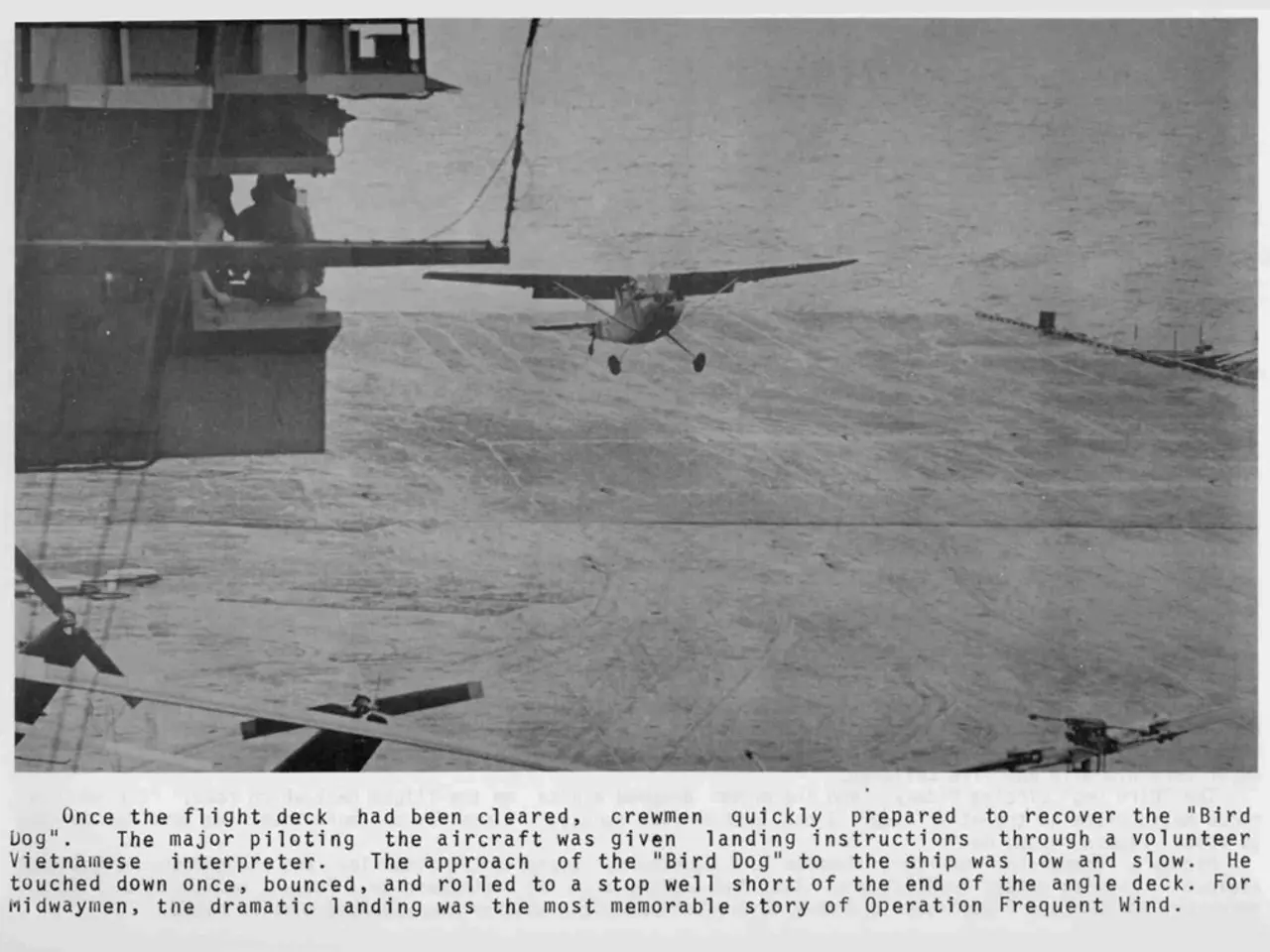United States Air Force aviators conduct inaugural flight of Australian F-35 fighter jets over the Pacific Ocean
Last week, the U.S. Air Force took a significant step towards enhancing interoperability among its allies by putting two of its pilots in the cockpit of Royal Australian Air Force (RAAF) F-35A Lightning IIs during the Talisman Sabre exercise in Australia.
The move was part of the RAAF's Lightning-X initiative, which aims to increase interoperability with allied nations' F-35s. The interfly event was designed to normalize F-35 cooperation in the Pacific, reflecting a strategic step in adapting to the evolving Asia-Pacific security environment.
The F-35 Interfly event enables pilots from different allied nations, such as the USAF, US Marine Corps, and Royal Air Force, to fly each other’s F-35s with full mission autonomy. This effort supports coalition commanders being able to treat allied pilots interchangeably under shared medical, physiological, and operational standards.
In prolonged or large-scale conflicts, pilots are the limiting factor for aircraft utilization. Interfly adds flexibility by enabling any coalition pilot trained on the common F-35 platform to operate any allied F-35 aircraft globally, thus increasing sortie generation and combat airpower availability.
The interfly events validate coalition warfighting capabilities through live-flight missions integrated with multinational aircrews, reinforcing deterrence and operational cohesion among allies. The F-35’s standardized cockpit architecture, shared training protocols, and cross-service alignment make pilot cross-operations “the easiest part,” facilitating seamless integration during exercises and potential future conflicts.
This year's Talisman Sabre exercise involves 19 nations, the most ever, with 30,000 total military personnel. In addition to the USAF and RAAF, the U.S. and U.K. Seaborn F-35s are participating in the exercise. The Air Force has been pushing to increase the interoperability of its F-35 fleet with cross-service events conducted among NATO allies.
The participation of coalition counterparts in Talisman Sabre is treated no differently than any other RAAF F-35 pilot. The participating aviators are embedded with the RAAF's No. 77 Squadron and No. 75 Squadron during Talisman Sabre. The F-35 interfly event in Australia is considered the easiest part due to the commonality of F-35 variants and aligned training and operational practices between F-35 users.
The F-35 interfly event during Talisman Sabre represents a milestone in allied coalition aviation, forging a more agile, versatile, and lethal combined airpower capability to meet potential future challenges in the Pacific theater and beyond. Marine Corps pilot Lt. Col. Johnny "Yardsale" Rose and RAF Squadron Leader Daniel "Goffy" Goff were among the participants in the F-35 interfly event.
The flying portion of the F-35 interfly event is considered the easiest part due to the commonality of F-35 variants and aligned training and operational practices between F-35 users. Talisman Sabre is a biannual exercise, primarily between the U.S. and Australia. In a prolonged conflict, the added flexibility to put any pilot in any F-35 and generate combat airpower anywhere in the world adds to the F-35 coalition's lethality. This year's Talisman Sabre exercise involves 19 nations, the most ever, with 30,000 total military personnel. American F-22 Raptors are deployed from Hawaii to Australia's Northern Territory for Talisman Sabre. The RAAF treats coalition counterparts as RAAF aircrew for medical, dental, physiological issues, egress systems, and human factors during Talisman Sabre. The participating aviators are embedded with the RAAF's No. 77 Squadron and No. 75 Squadron during Talisman Sabre. The participating U.S. Air Force pilots were Maj. Justin "Spike" Lennon and Maj. Colby "Burn" Kluesner. The U.S. Air Force has performed an international interfly on an ad-hoc basis for the first time during this year's Talisman Sabre exercise. The purpose and significance of the F-35 interfly exercise center on enhancing interoperability, flexibility, and coalition lethality among allied fifth-generation fighter forces.
- The US Air Force, in collaboration with the Royal Australian Air Force (RAAF), is using the F-35 air force aircraft during the Talisman Sabre exercise to increase the integration of weapons within their military air forces, allowing pilots from different nations to operate each other's F-35s.
- The aerospace industry’s focus on the F-35 program has resulted in a standardized cockpit architecture, shared training protocols, and cross-service alignment, making it easier for pilots from various nations, such as the US and UK, to cross-operate during exercises and potential future conflicts.
- Amidst increasing tensions in the Asia-Pacific region, the finance sector is providing significant support towards the procurement of aircraft, such as the F-35, to ensure the military's readiness and maintain a superior fight force within the region.
- The F-35 interfly event, which is considered the easiest part due to the commonality between F-35 variants and aligned training and operational practices between F-35 users, is crucial in preparing for prolonged or large-scale conflicts, as it increases the flexibility to generate combat airpower anywhere in the world, contributing to the lethality of the coalition's aerospace forces.








